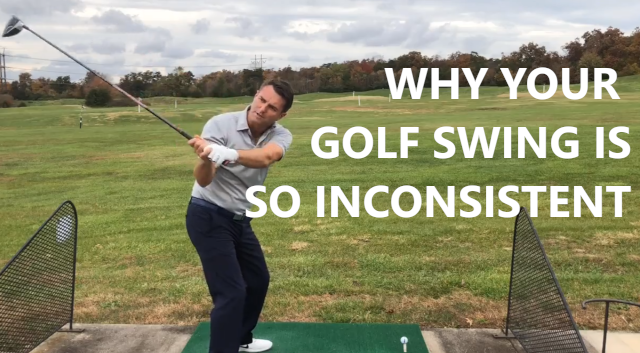
What Causes The Inconsistency In Your Golf Swing?
I speak with plenty of golfers each week who tell me about their inconsistency on the golf course. One round they can play great and then in the next they get completely different results.
Your Technique Is Not The Problem
So what changes from one round to the next? Most golfers immediately think their swing is broken and try to fix it by thinking about their positions and getting technical during their swing. I’m sure you’ve been there too. But there’s one thing that is most likely the cause of the inconsistency in your golf swing and it’s a much easier fix than you’d think.
Tension In Your Muscles Cause Inconsistency In Your Swing
Clearly a player’s swing mechanics are changing if in one round their hitting the target most of the time but in another round their not. But what’s causing the swing change isn’t that all of a sudden you’ve forgotten how to swing the club, but how much tension there is in your muscles. This is another reason that golfers can play great on the range and then terrible on the course – on the range where there are no consequences, tension is low, but when you’re nervous on the golf course, tension is higher, which changes the golf swing. Varying levels of tension cause inconsistency in the golf swing.
When your swing is fairly tension free, you are able to use more of the bigger muscles and you can feel the weight of the club head. This is also very important in the short game and putting where being able to feel the club and putter head is essential.
How Tension Causes A Slice
Let’s take a look at how tension can exacerbate one of the most common swing faults in golf, the slice, which is caused by the player using their hands and upper body too much on the downswing. The more a player tries to attempt to control it the more tension they have in their hands and arms and the worse it gets. The opposite is what you see in a Tour player’s swing – there’s little tension in the hands and arms so they naturally fall into a good position, being pulled through by the lower body and then the torso.
Let’s play a couple of shots (in the video below) to see the effect of tension on the golf swing, and how you can become more aware of it during your rounds. If you can do these things, you’ll have less inconsistency in your golf swing and your shots.



Hey David.. can you switch emails for me so I can start getting your stuff again? The Purtz67@pgatour.com doesn’t work anymore.. my new email address is purtzerswing@gmail.com.
Thank you,
Tom Purtzer